Why Understanding Search Intent Is So Important In 2020
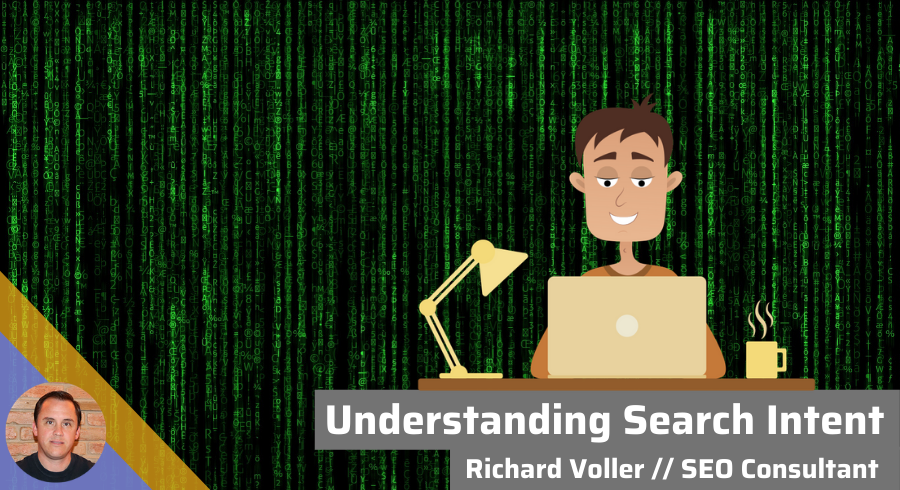
Having an understanding of search intent in the context of the user query is more important now than ever before. Gone are the days where you pick a primary keyword, a batch of semantic keywords and then optimise the page for those terms. In this article, I am going to explain how search intent affects what you should be doing with your content planning and creation before going after a particular search term.
Table Of Contents
Get Your Content In Order
As Google has gotten smarter at understanding the context in which queries are made, we as marketers need to ensure that we are on-point in content planning and research.
On too many occasions, I see websites with no real content structure. They certainly have not been taking into account the sales funnel process into their continual content creation. More often than not, whoever has been doing the work on the site has just done basic keyword research, picked search terms with some search traffic, minimal competition and written a blog post about it.
One major problem I have frequently seen is that content on all levels; even informational is trying to sell the core product offering by effectively tweaking the content from informational to commercial. By doing this, Google then sees the created content as out of context of the search and will not deserve to rank.
Google’s algorithm has become smarter at recognising the associated intent behind the queries that users make. It is not just that they understand the intent behind search terms, but they also understand the intent within the web pages they are considering ranking for the query.
Traditionally digital marketers have been associating specific phrases with the intent of the search by categorising the phrases into one of 4 categories which are:
- Navigational
- Informational
- Commercial Investigation
- Transactional
Then with a list of hundreds if not thousands of keywords, they would sort phrases into these categories depending on if they contained certain words. For instance:
Informational: ie. Who, What, When, Where, How
Navigational: ie. Brand Name, Product Name, etc.
Commercial Investigation: ie. Colour, sizes, price, etc.
Transactional: ie. Buy, sale, cheap, cheapest, etc.
This categorisation is intent on a fundamental level, but what it’s not doing is taking into account the context of the search query or how Google is interpreting that query.
The end game is, of course, to rank well for the transactional keywords which have deep levels of intent. But, some aspects need to be considered rather than just creating a keyword optimised page for the target search term. With the way that Google works today, just doing that is all sorts of wrong.
How To Leverage Search Intent In 2020
The first and most important factor of a webpage is to get a visitor to ‘take action’. Often this is misunderstood as trying to “sell” the visitor. Especially if the page falls into the category of ‘informational’ then taking action could be clicking through to another page on the website or maybe even joining an email list, in essence pulling the visitor into the sales funnel.
The image below shows you the standard sales funnel.
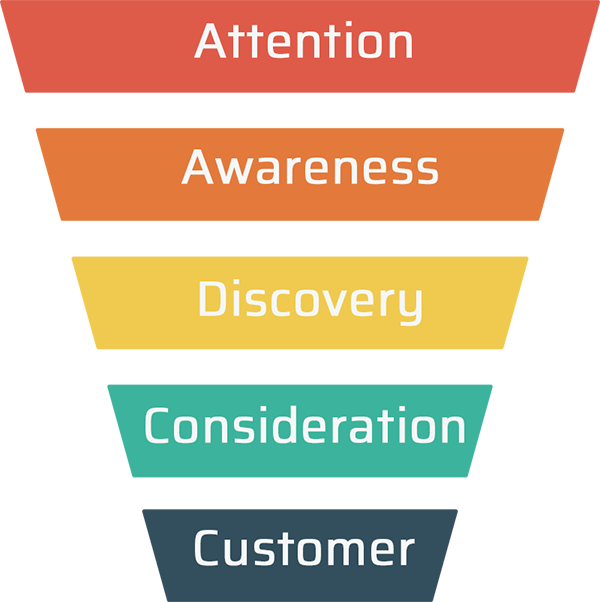
You can, of course, make the funnel smaller, i.e. four parts which would be:
- Awareness
- Interest
- Consideration
- Purchase
Or, you could even make it longer by adding in extra elements such as ‘repeat customers’ and ‘brand advocates’. It all depends on your business model and what you are trying to achieve. In general, though, I work on the 5 step process.
However, this is only the first part of understanding where to place specific content in your funnel. Brendan Hufford made a YouTube video on his take on search intent, and I do agree wholeheartedly with him.
Understanding Your Funnel Structure
ToFu (Top Of The Funnel) – Attention / Informational
At the top of the funnel, your potential audience understands they have a problem, and may well be searching for further information on the issue or possible ‘cure’ for the problem.
How To Target This Audience:
Show empathy with the visitor and show them that you understand their pain point. At this stage, the visitor needs to know that a solution such as your product or service exists. By doing this, it moves them quite nicely into the next phase of the funnel, which is awareness.
Desired Action From Visitor At This Stage
At this stage in the funnel, you wouldn’t be expecting the visitor to pick up the phone and call you, or get their wallet out and make a purchase. As I mentioned earlier people not taking into account, the sales funnel process and the actual intent of the visitor at this stage is a significant flaw in the marketing process. Of course, you want the visitor to take some form of action when visiting the page, but the “sell” at this stage is merely getting that action to take place. It could be clicking to another page on the site, or joining an email opt-in. There are countless actions which can be made at this stage to get them into your sales funnel. At this level, it is ALL empathy and trust.
Mofu – Middle Of The Funnel – Discovery Phase
At this stage of the funnel, the visitor is aware that a solution is available (not necessarily yours). However, the content at this stage needs to be focusing on showing why your product or service is the best fit for them!
The key here is to reconnect with their pain point and then show how your solution is, without question the right one for them.
Desired Action From the Visitor
When the visitor comes to this page, you know that they are effectively looking for the right solution to their problem and may well be on the fence about which product to choose. Here is when you must show them why your product or service is their best option.
The selling point here is to prove, without doubt, that your solution is the one for them. This phase of the funnel is put together in such a way as to pull your visitors through from the discovery phase to the consideration phase.
BoFu – Bottom Of The Funnel – Transactional
This stage of the funnel is the north star of any campaign. Visitors here already know that your solution is a perfect fit for them. They are virtually ready to buy. The content here needs to present the deal to them clearly and concisely. It would be best if you were reenforcing the points you have already made, not to justify a price point but to leave them with a feeling that anything else would be second best.
Of course, this all depends on what you are trying to ‘sell’. Professional services should not compete on price IMO. The price is what it is for precisely that, ‘a professional’!
For a product, you want your visitors to be energized about your offering. They should think that anything but your product would be a cop-out.
How Does Google Understand Search Intent?
Googles goal is to provide the best possible solution to their user’s searches. Their algorithm and progress with NLP (Natural Language Processing) mean they have come on in leaps and bounds at ‘understanding’ the intent behind a users search.
The BERT update in October 2019 was a major core algorithm update, for the real throbbers amongst us, this stands for “Bidirectional Encoder Representations from Transformers.”
This was not an update that made huge waves in the SEO community, but it did affect around 10% of all queries. By Google’s standards for any core algorithm update, this is huge. At this stage, it is influencing the longer, more conversational search terms. The reason why it is probably not causing too many ructions in the SEO community is that these are in general terms which SEO’s would traditionally actively go after.
In my opinion, the BERT aspect of the algorithm is only going to evolve more, and probably quicker than we would care to think about. My personal opinion is that the search landscape in 5 years will be an entirely different animal to what it is today. I believe the rise in Virtual Assistants like Google Assistant, Siri and Alexa will become way more advanced and work ‘with’ Googles search far more than they do now.
Voice search was a slow starter, but it is more prevelant now than ever. With wearable tech becoming more widely used and Google and Apple actively being part of the automotive industry with Android Auto and on off rumours of Apple developing their own vehicle. It is all in the tech companies goal to have us ‘seamlessly’ connected.
My Vision Of Search (Quote Me On This In 2025 And See How Far Off I Am).
In my opinion, AI and Voice search in 5 years time will be on a whole different level that we are not even comprehending at the moment. Think conversational search.
We are some way off of this at the moment and it is important to remember that BERT is still a long way off from understanding context in the same way as humans do, however its a giant leap forward for NLP. If you are not familiar with what BERT is then check out Britney Muller’s overview of BERT on Moz.
Can I Optimise For BERT?
No. There you go, end of conversation.
But, wait. While you cannot optimise specifically for BERT, it is part of Googles overall desire to serve up the best possible solution for a users query. So, how do you make sure that you are doing this?
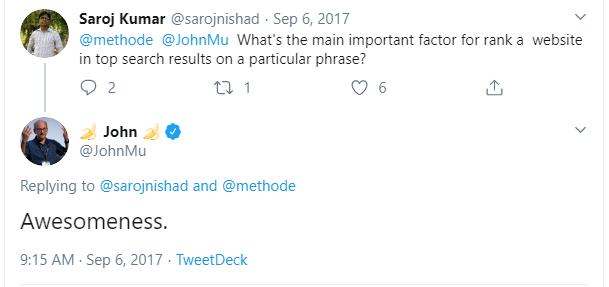
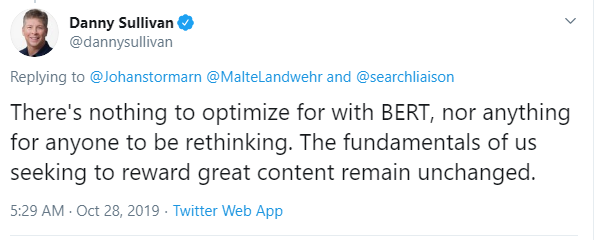
Simples: Be Awesome! By this, it means up your game, produce epic content that is focused on the intent of the users.
Let’s take a look at a SERP. Points to note here, the search is done, logged out and in incognito, so no personalised results are showing. I will also point out that over a 24hr period, I have seen three different layouts (on desktop). Sponsored results as shown below) with no featured snippet. One with a single standard Adwords Ad followed by a featured snippet (of the NHS site). Finally one with two ads, and a featured snippet from the Superdrug page which currently is showing as #1.
One point to note is that recently Google updated their algorithm so that if you appear as the featured snippet, your original URL will no longer also show on the first page of Google.
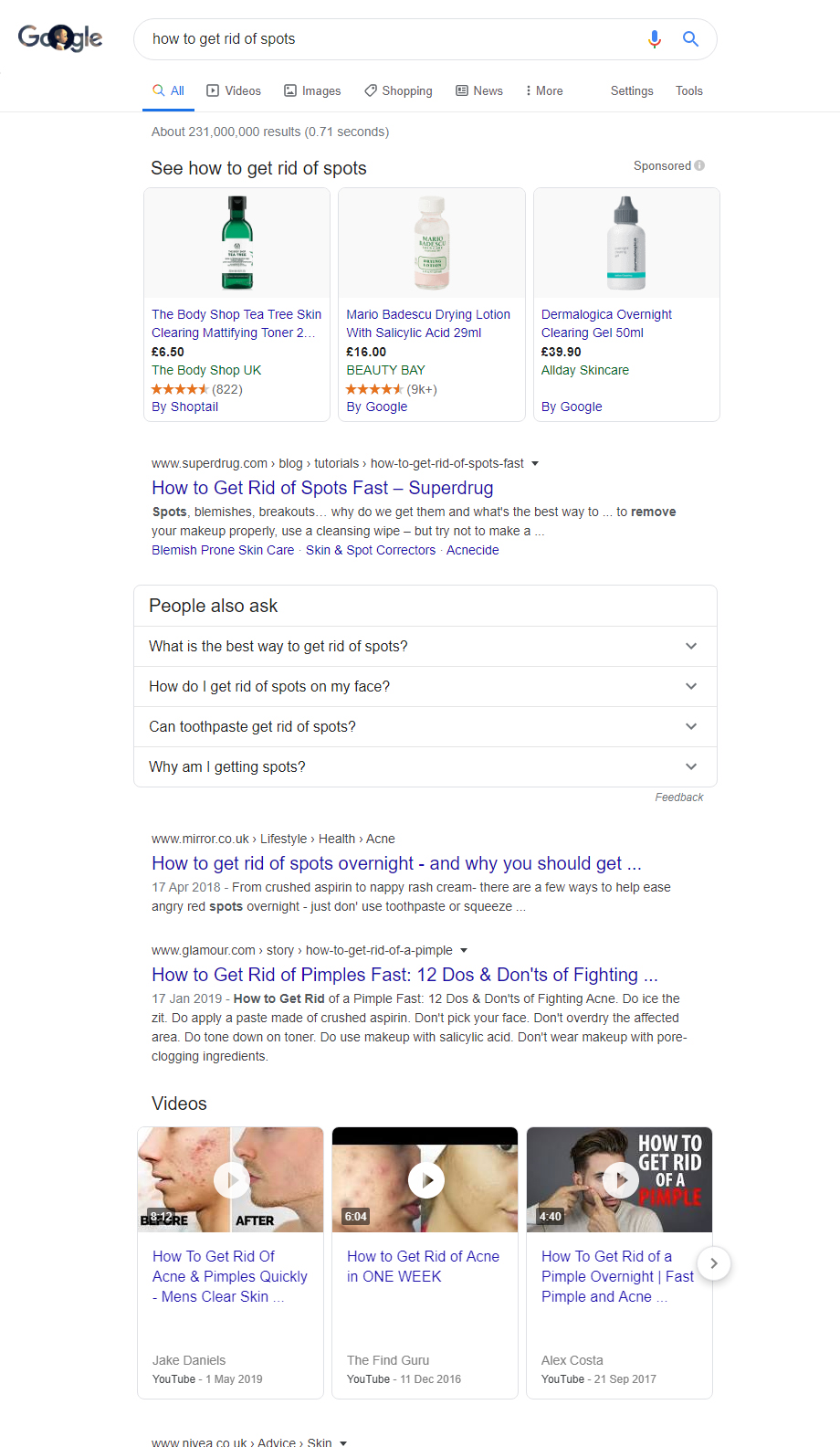
As we are focusing on the organic rankings here, I am not going to focus so much on the sponsored product ads at the top of the page but more on the organic layout and critical points to note within the search results.
First of all, lets put the search into some kind of context.
If someone has searched for “how to get rid of spots” then there are a few things that are assumed.
1. They have spots
2. They are looking for a solution to their spots/acne.
3. They want the solution to work fast, because, well, why wouldn’t they!
In the screenshot above, the top 3 organic results (actually all results on page 1 except for the NHS) include the word Fast, or words with the same connotation such as ‘Overnight.’
By taking a very brief look at the results, and we can glean the following from them.
Word Counts
#1 = 2402
#2 = 2884
#3 = 1967
#4 = 1962
#5 = 6703
#6 = 909 (NHS) – Official Medical Advice
#7 = 4325
#8 = 3121
#9 = 2226
Except for the NHS page, all of these pages are long-form ‘guides’ with either different methods or step by step procedures. What you would need to take from this is that if for instance, you had a client with a product page that they wanted to rank for that search term then, well it’s not going to happen.
If you were to go after this keyword, as a starting point you would need to be considering the following.
1. You would need to create long-form, informative content giving the users the information that they are craving. All the while, considering your sales funnel in the process.
2. You would need to include the word ‘fast’ or a connotation of that word as a focus of your content.
3. You would need to build links, lots of lovely, lovely links. Purely because you would be competing against some very high authority websites.
You should also consider what is appearing in the “People Also Ask” section. Try and fit some these into the content (where relevant). Doing so will help signal to Google that your content is comprehensive and on-topic. If you have ever played with the people also ask feature you will notice how it expands to give you a mass of ideas.
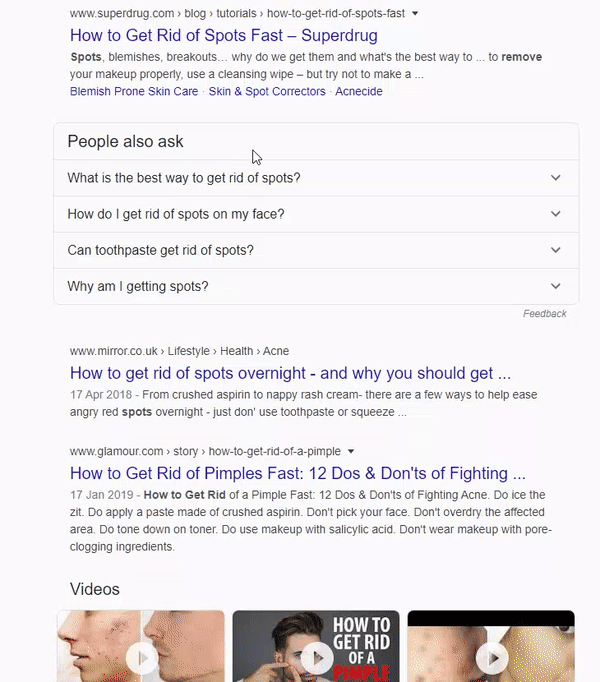
One key take away here is that never assume that long-form content is the right way to go about attacking a search term. You should be analysing the SERP for your primary search term and looking at what Google is showing for these terms. Yes, its a time-consuming task but its a necessary evil.
Can I Automate SERP Analysis?
Many tools which search marketers use will look at the SERP in respect to elements such as backlinks. While this is an incredibly important factor, understanding the topics which Google sees as essential is a defining factor. Doing this on a large scale manually is too time-consuming to be effective.
There are tools available such as MarketMuse and Clearscope, which are incredible at identifying gaps in your content and the market. However, these are not cheap tools. Clearscope starts at $350 per month and at the enterprise level you will be looking at 5 figures per year. MarketMuse starts at $399 per month (at the time of writing). Are they worth this amount of money? Absolutely! If you are serious about creating killer content that’s tailored to rank, then they pay for themselves in a very short period of time.
Anyway, there endeth my first post. User intent is one of the most important factors of search going into 2020. Its always been there and any good SEO would be taking it into account, but today we need to go that extra mile with our analysis. I will offend your eyeballs at some point soon with a video to show a very basic way of manually checking a keyword intent and recording the result.

